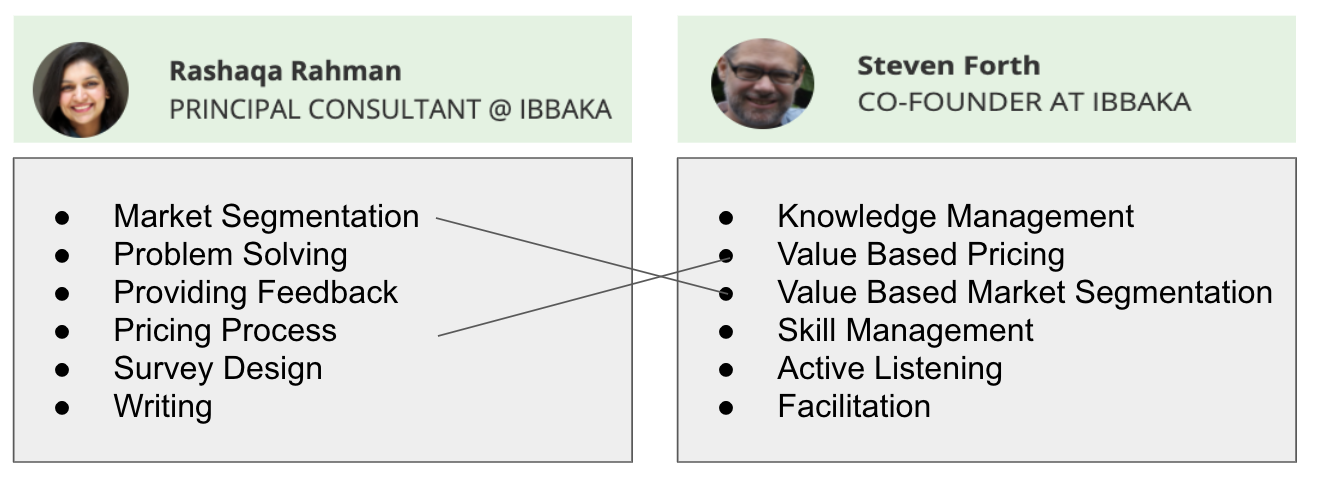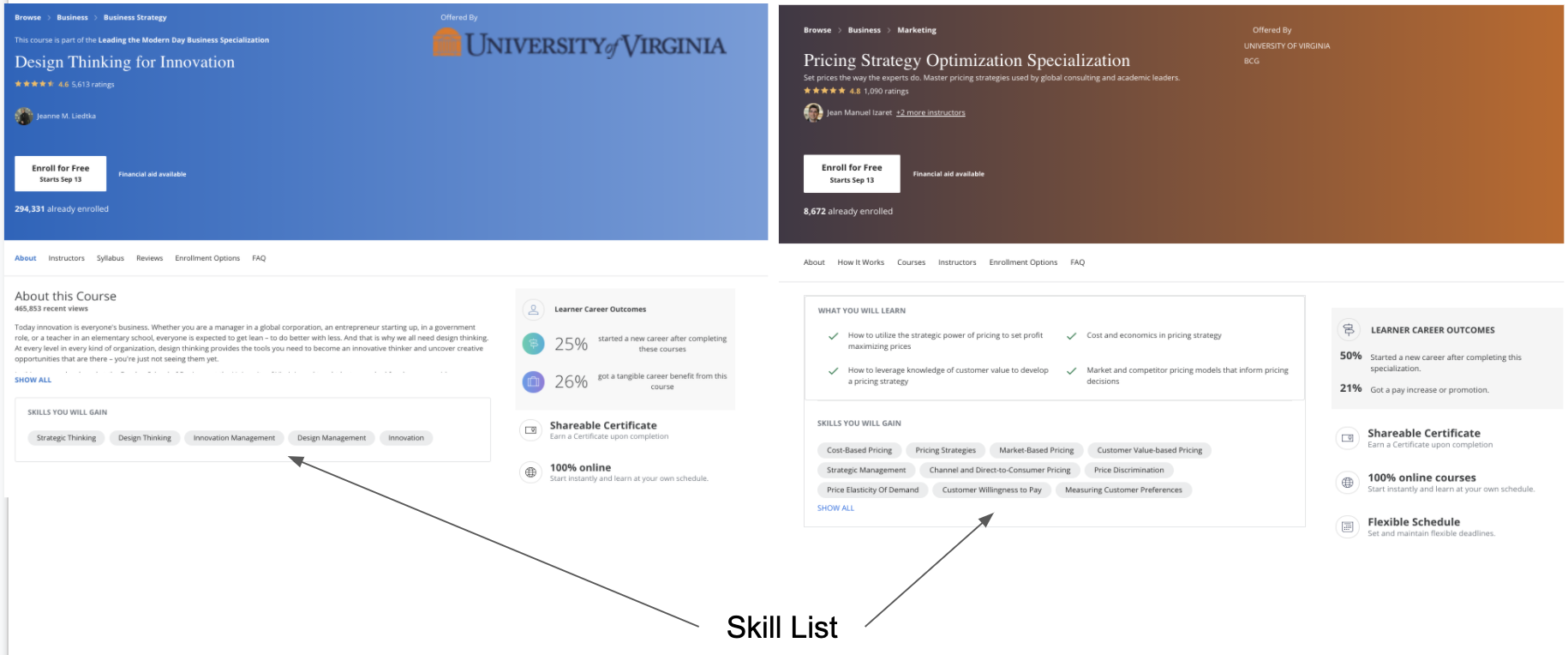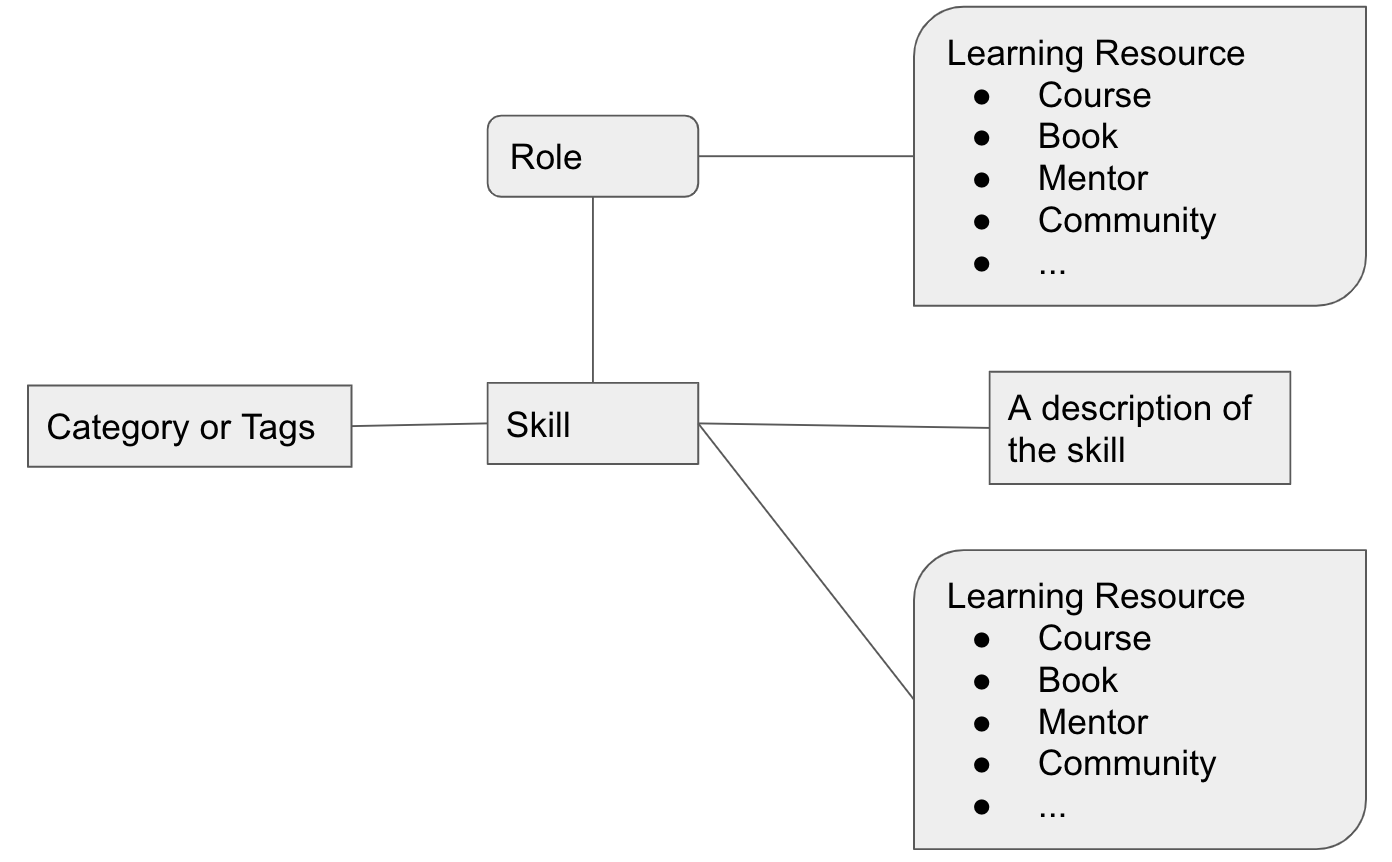Simple (very simple) skill and competency models
Steven Forth is co-founder and managing partner at Ibbaka. See his skill profile here.
Skill and competency models perform three main functions for organizations.
They are one of the best ways to organize jobs and to clarify the requirements for different jobs and roles.
They act like a lens, that can be used to look at a set of skills and find strengths, potential, skill gaps.
They help individuals to see what new skills and competencies they may need, to prepare themselves for a new role or for the future of work.
With this power comes complexity. Competency models frequently evolve into sprawling structures, full of different poorly connected parts, and complicated descriptions. This can make them difficult for anyone other than the team that created them to understand or put to work. It also makes them difficult to manage. The emergence of complexity is a natural result of use, but it can also make use more difficult. How can we pull this back?
The artist and writer Emily Carr once said that writing is like paring down a stick, removing things until you could see the underlying form. Let’s try that with competency models. What is the simplest possible competency model?
A skill list comes to mind. Just a set of words that are meant to signify skills. Of course a simple list does not mean much unless it is attached to something. Skill lists are often attached to either people or content. Below are two skills lists, one for me and the other for my colleague Rashaqa Rahman (I mention her as she is currently developing a simple tool that can be used to build competency models in a spreadsheet. If you are interested in testing this for us, please send a message to info@ibbaka.com).
Skill lists are also used to describe content. Here are two examples from Coursera.
Pretty simple, but even these simple lists are useful. They are especially useful when combined (and here is one of the secrets to competency models, they are most powerful when used as bridges from one thing to another). Combining two people’s skills lists and looking at the intersection or the unique skills can give insights into how the two people will work together. The same can be done with teams or even business units (add enough people and skill lists and you can discover all sorts of different clusters that help figure out how to build teams or improve performance).
Of course, a simple world does not tell you a lot about the skill. Two things to add are a description of the skill and a tag or category for the skill.
I am reading Donna Spencer’s lovely book on Card Sorting. We occasionally carry out card sorting sessions for skills. We have used this to develop our own category system and to customize category systems for customers. It was a card sorting session led by David Botta that led us to discover ‘connecting skills.’ When people are asked to sort their own skills there are frequently skills that they place between two piles of skill cards. When asked about this they say that these are the skills they use to connect the two different skills sets (on a few occasions people have connecting skills for three different skill piles, I have never seen this for more than three, but I am sure there are subtle thinkers out there that have skills to connect four or even five different skill piles.
In her work to develop a couple of simple skill models to use in our forthcoming downloadable skill and competency modeling development spreadsheet, Rashaqa identified two different approaches. She wanted a simple skill model relevant to as many people as possible. Here she opted to use behaviors as an organizing principle. The model she is developing is for cybersecurity. Not for a cybersecurity expert though. She wanted a simple model to describe the behaviors, and the skills supporting these behaviors, that are needed by almost all of us in today’s world, when so many are working virtually. Behaviors can be added to anyone’s skill profile.
Sometimes we want a simple skill model that introduces a new role or the skills need for a role. There are many current examples. Cybersecurity is one. There are many emerging cybersecurity roles. Rashaqa decided to go a different direction though. With sales changing and technical sales becoming more and more important, she is building a simple model for the different roles involved in technical sales.
So how do competency models get complicated? Here is one example. Roles require more than skills. There are often behaviors associated with roles. The roles have skills and the behaviors have skills, and off we go.
As one of the most common uses of skill and competency models is to connect learning and development to performance, a common extension of even a simple model is to connect learning resources. This can be done for the behavior (or role) or directly to the skill. At Ibbaka we tend to do this at the skill level as it supports skill reuse, which is one of our goals. Skill reuse promotes career agility and helps people to transform their careers, but that is a topic for another day.
What do you do if you already have a competency model, one that has grown complex beyond comprehension? Well, we want you to use the Ibbaka Talent Platform of course, which is designed to manage complexity and put it to work. Many organizations are complex, they need complex competency models, and this needs to be supported.
Another approach is to try to simplify your model. Simplifying the complex is not easy. One of the best guides is John Maeda’s Laws of Simplicity.
We try to use these laws in the design of our software platform. Notice Law 8, which is about Trust. Skill and competency models work best when there is trust. And trust can help us get to simplicity. See Adding trust to your customer journey map.
Ibbaka Posts on Competency Models and Competency Frameworks
From user experience to competency model design - Margherita Bacigalupo and EntreComp
Competency framework designers on competency framework design: The chunkers and the slice and dicers
Competency framework designers on competency framework design: Victoria Pazukha
Design research - How do people approach the design of skill and competency models?
The Skills for Career Mobility - Interview with Dennis Green
Lessons Learned Launching and Scaling Capability Management Programs
Talent Transformation - A Conversation with Eric Shepherd, Martin Belton and Steven Forth
Competency Models Made Easy - Two Simple Spreadsheets to Build Your Own Competency Models
Simple (very simple) skill and competency models (this post)
Individual - Team - Organizational use cases for skill and competency management
Co-creation of Competency Models for Customer Success and Pricing Excellence
Competencies for Adaptation to Climate Change – An Interview with Dr. Robin Cox
Architecting the Competencies for Adaptation to Climate Change Open Competency Model
Integrating Skills and Competencies in the Talent Management Ecosystem
Organizational values and competency models – survey results











